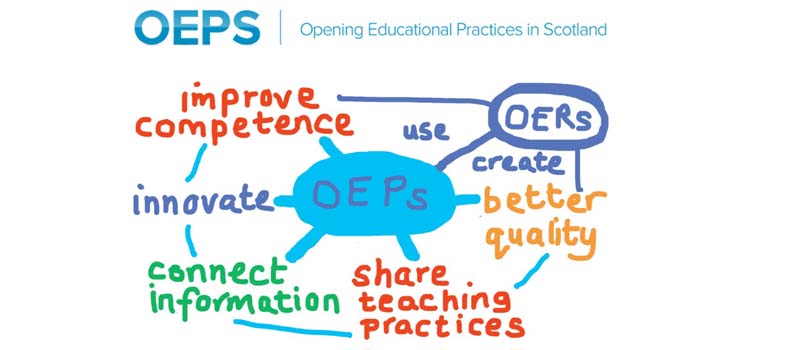1.4 The practice of open educational resources
The next sections of the course will explore open practice as ‘use’ and situate the discussion within the context of finding and reusing open educational resources (OER). However, it is first worth remembering that in order to be able to ‘use’ an OER someone first needs to have shared the material and openly licensed it. Indeed, without sharing something with others it is not possible to widen access to that resource, meaningless to choose to make something free or low cost and impossible to increase transparency, as the material is not accessible. Sharing is therefore an important fundamental enabler or characteristic of ‘openness’ (see Section 1.2).
The cycle of creating, reusing or re-versioning material and then sharing it back is sometimes referred to as a ‘virtuous circle’ (see ‘Sharing and reuse in OER: experiences gained from open reusable learning objects in health’). Research has shown that, although a large number of students and educators use or adapt OER, they do not necessarily share the resources they have created on an open licence, nor share back reworked versions of resources they have found (see OER Evidence Report 2013–2014). This course looks at finding and reusing OER in Section 3 and what you need to do to effectively share material in Section 4.
Activity 1C
Reflect on the following questions:
- What kind of resources, if any, do you share?
- Who do you share with?
- Do you know what happens to what you share?
- Do others share with you and if so, is this an important source of finding new resources?
Write down your responses in your reflective log.
Discussion
You might already share materials you have created with colleagues or friends or discuss your ideas informally. In most cases, you probably don’t mind how the materials are reused, as you are familiar with the context and reasons people might be reusing the materials you share. For example, perhaps one of your lesson plans provides a great starting point for a new colleague to develop a plan for their own class. Or a colleague could reuse an activity you developed with clients in a workshop.
However, although you might not mind how others use the resources you share, how do you know it’s OK to reuse resources? This is where an open licence has an important role, as it includes clear instructions to a potential user of a resource about who created it and how it can be used. Even if you don’t mind how someone uses material you have created, it is important to consider others and enable ease of use.
Now let’s take a look at what enables open practice to take place within the context of OER: open licences.
1.3 Open educational resources and open educational practices?
